 The 91st episode of The Six Million Dollar Man is broadcast on ABC, starring Lee Majors and Richard Anderson. Eric Braeden (Escape From The Planet Of The Apes) guest stars.
The 91st episode of The Six Million Dollar Man is broadcast on ABC, starring Lee Majors and Richard Anderson. Eric Braeden (Escape From The Planet Of The Apes) guest stars.
More about The Six Million Dollar Man in the LogBook and theLogBook.com Store
This series is not fully chronicled in the LogBook. You could join theLogBook team and write this guide or support the webmaster’s efforts to expand the site.

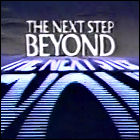 The week-long syndication window opens for the first episode of The Next Step Beyond, a revival of the 1950s/60s supernatural anthology series One Step Beyond. John Newland resumes his hosting and directing duties from the original series; Laraine Stephens (Matt Helm) guest stars. Though syndicated genre programming will become commonplace in the late 1980s, this is a rare example of a genre show produced for first-run syndication in the late 1970s.
The week-long syndication window opens for the first episode of The Next Step Beyond, a revival of the 1950s/60s supernatural anthology series One Step Beyond. John Newland resumes his hosting and directing duties from the original series; Laraine Stephens (Matt Helm) guest stars. Though syndicated genre programming will become commonplace in the late 1980s, this is a rare example of a genre show produced for first-run syndication in the late 1970s.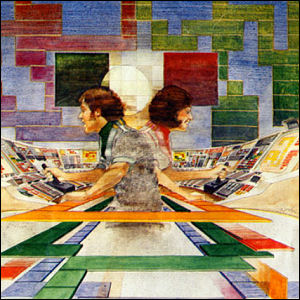 Atari releases
Atari releases  CBS airs the
CBS airs the  Terry Nation, the television writer who created Doctor Who’s greatest foes, the Daleks, graces the world with another science fiction creation on the BBC,
Terry Nation, the television writer who created Doctor Who’s greatest foes, the Daleks, graces the world with another science fiction creation on the BBC,  The 26th episode of Wonder Woman airs on CBS, starring Lynda Carter and Lyle Waggoner. Christopher Stone, Bubba Smith, and Greg Morris (Mission: Impossible) guest star.
The 26th episode of Wonder Woman airs on CBS, starring Lynda Carter and Lyle Waggoner. Christopher Stone, Bubba Smith, and Greg Morris (Mission: Impossible) guest star. The 48th episode of The Bionic Woman, starring Lindsay Wagner and Richard Anderson, airs on NBC. Roger Perry (Harrigan And Son, Arrest And Trial) guest stars.
The 48th episode of The Bionic Woman, starring Lindsay Wagner and Richard Anderson, airs on NBC. Roger Perry (Harrigan And Son, Arrest And Trial) guest stars. The
The 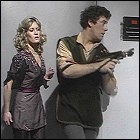 BBC1 premieres the
BBC1 premieres the 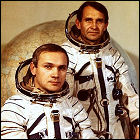 The Soviet Union launches Soyuz 27 on a mission to the Salyut 6 space station – the first instance of three vehicles being docked together in space. Cosmonauts Vladimir Dzhanibekov and Oleg Makarov spend six days with the crew of Soyuz 26 board the station, although Dzhanibekov and Makarov swap capsules with the station crew, leaving the newer vehicle at the station for their eventual return. The crew of Soyuz 27 is in space for less than a week, but their spacecraft remains in orbit, connected to Salyut, for over two months.
The Soviet Union launches Soyuz 27 on a mission to the Salyut 6 space station – the first instance of three vehicles being docked together in space. Cosmonauts Vladimir Dzhanibekov and Oleg Makarov spend six days with the crew of Soyuz 26 board the station, although Dzhanibekov and Makarov swap capsules with the station crew, leaving the newer vehicle at the station for their eventual return. The crew of Soyuz 27 is in space for less than a week, but their spacecraft remains in orbit, connected to Salyut, for over two months. Arista Records releases, just weeks after the movie’s premiere,
Arista Records releases, just weeks after the movie’s premiere, 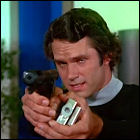 CBS airs the
CBS airs the 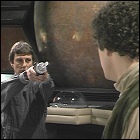 BBC1 premieres the
BBC1 premieres the 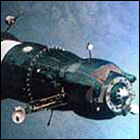 The first Soviet-made uncrewed Progress resupply vehicle lifts off en route to the manned Salyut 6 space station. Looking more or less like a Soyuz vehicle, Progress is an automated freighter whose systems lock onto Salyut’s docking transponder, guiding the unmanned craft toward a smooth and completely automated docking (though ground controllers stand by to take manual control by remote). Since Progress is not required to return a crew to Earth, its engines and their fuel can help to boost Salyut 6 into a higher orbit when necessary. It carries over 5,000 pounds of food, clothes and other supplies, and can automatically refill the station’s air and fuel supplies. Progress vehicles become an integral part of the space program, remaining in service long enough to resupply the International Space Station in the 21st century.
The first Soviet-made uncrewed Progress resupply vehicle lifts off en route to the manned Salyut 6 space station. Looking more or less like a Soyuz vehicle, Progress is an automated freighter whose systems lock onto Salyut’s docking transponder, guiding the unmanned craft toward a smooth and completely automated docking (though ground controllers stand by to take manual control by remote). Since Progress is not required to return a crew to Earth, its engines and their fuel can help to boost Salyut 6 into a higher orbit when necessary. It carries over 5,000 pounds of food, clothes and other supplies, and can automatically refill the station’s air and fuel supplies. Progress vehicles become an integral part of the space program, remaining in service long enough to resupply the International Space Station in the 21st century. BBC1 premieres the
BBC1 premieres the 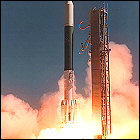 A joint project between NASA and the European Space Agency, the International Ultraviolet Explorer is launched atop a Delta rocket from Cape Canaveral. The precursor of later space-based telescopes such as the Hubble Space Telescope, IUE produces no photographic images, instead concentrating on detecting ultraviolet emissions from distant objects. IUE adds significantly to the growing body of space science, and is the first satellite to give astronomers the chance to immediately aim its detectors at targets that yield unexpected results, allowing it to respond swiftly to such rapidly developing phenomena as Supernova 1987A. Designed to stay operational for three years, IUE will remain online for almost two decades.
A joint project between NASA and the European Space Agency, the International Ultraviolet Explorer is launched atop a Delta rocket from Cape Canaveral. The precursor of later space-based telescopes such as the Hubble Space Telescope, IUE produces no photographic images, instead concentrating on detecting ultraviolet emissions from distant objects. IUE adds significantly to the growing body of space science, and is the first satellite to give astronomers the chance to immediately aim its detectors at targets that yield unexpected results, allowing it to respond swiftly to such rapidly developing phenomena as Supernova 1987A. Designed to stay operational for three years, IUE will remain online for almost two decades. British glaciologist John H. Mercer publishes a
British glaciologist John H. Mercer publishes a